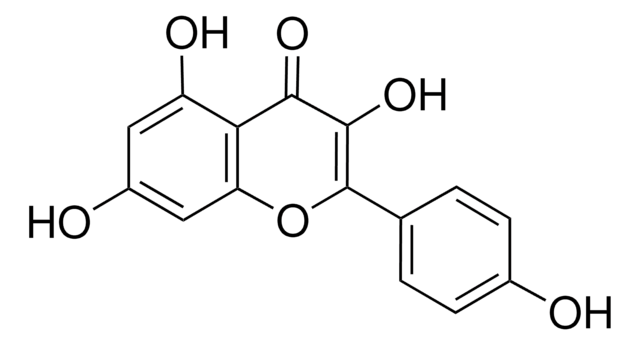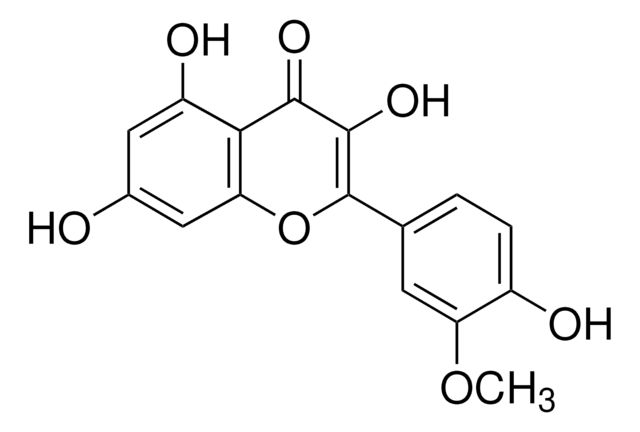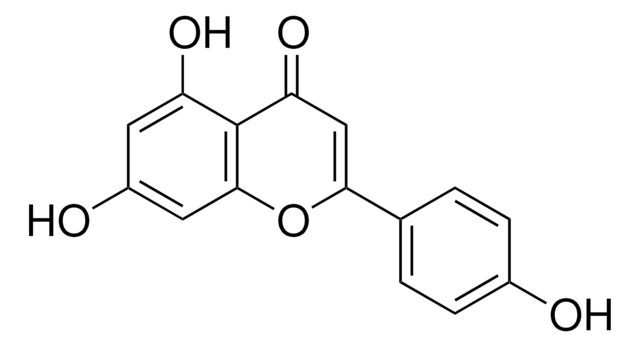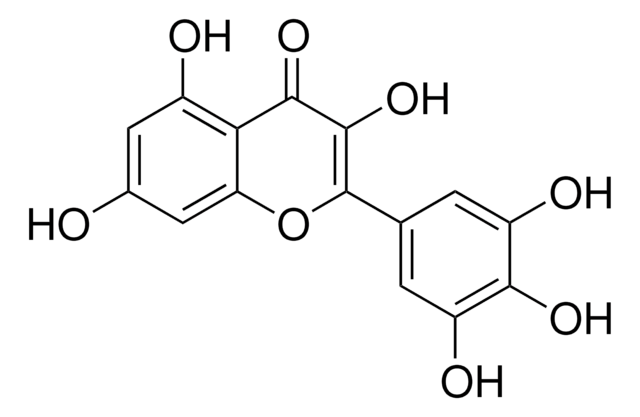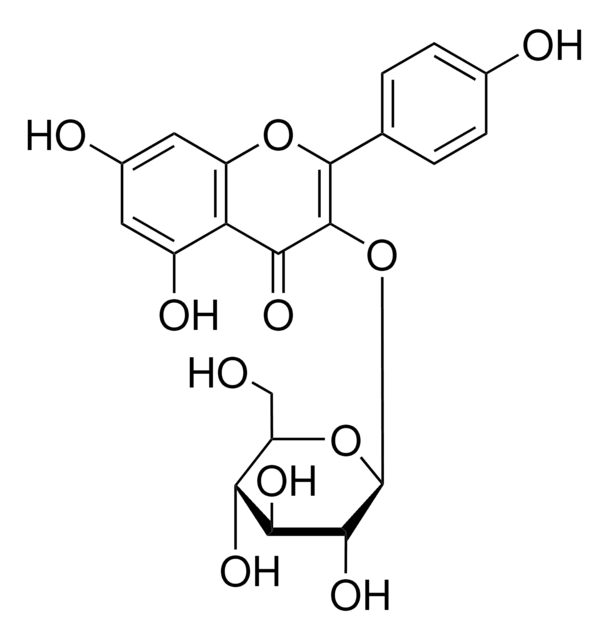60010
Kaempferol
≥97.0% (HPLC)
Synonym(s):
3,4′,5,7-Tetrahydroxyflavone, 3,5,7-Trihydroxy-2-(4-hydroxyphenyl)-4H-1-benzopyran-4-one, Robigenin
About This Item
Recommended Products
Quality Level
Assay
≥97.0% (HPLC)
impurities
≤12% water
application(s)
metabolomics
vitamins, nutraceuticals, and natural products
SMILES string
Oc1ccc(cc1)C2=C(O)C(=O)c3c(O)cc(O)cc3O2
InChI
1S/C15H10O6/c16-8-3-1-7(2-4-8)15-14(20)13(19)12-10(18)5-9(17)6-11(12)21-15/h1-6,16-18,20H
InChI key
IYRMWMYZSQPJKC-UHFFFAOYSA-N
Gene Information
human ... CDC2(983) , CDK5(1020) , CDK6(1021) , CYP1A2(1544) , CYP2C9(1559) , GSK3A(2931)
mouse ... Hexa(15211)
Looking for similar products? Visit Product Comparison Guide
General description
Application
- to test its effect on osteoblast proliferation, migration, and differentiation in mouse pre-osteoblast cell line (MC3T3-E1 cells)
- as an antioxidant and a hepatoprotective agent against zearalenone (ZEA)-induced oxidative stress and apoptosis in HEPG2 cells
- as a neuroprotective agent against cadmium chloride (CdCl2) induced hippocampal damage and memory deficits in rats
- as an anti-inflammatory agent, together with apigenin, for stem-cell therapy on knee osteoarthritic male rats
Biochem/physiol Actions
Signal Word
Warning
Hazard Statements
Precautionary Statements
Hazard Classifications
Acute Tox. 4 Oral
Storage Class Code
11 - Combustible Solids
WGK
WGK 3
Flash Point(F)
Not applicable
Flash Point(C)
Not applicable
Personal Protective Equipment
Choose from one of the most recent versions:
Already Own This Product?
Find documentation for the products that you have recently purchased in the Document Library.
Customers Also Viewed
Articles
Antioxidants protect biological systems from oxidative damage produced by oxygen-containing free radicals and from redoxactive transition metal ions such as iron, copper, and cadmium.
Our team of scientists has experience in all areas of research including Life Science, Material Science, Chemical Synthesis, Chromatography, Analytical and many others.
Contact Technical Service